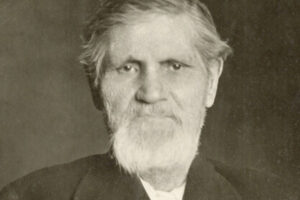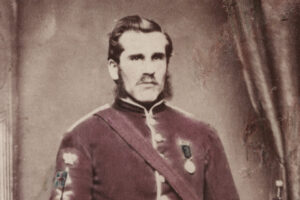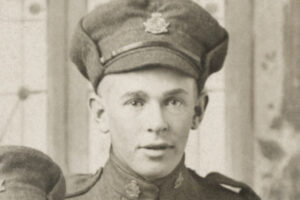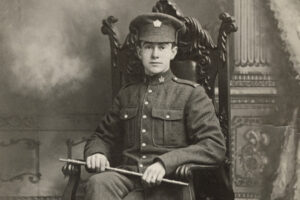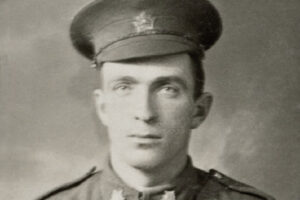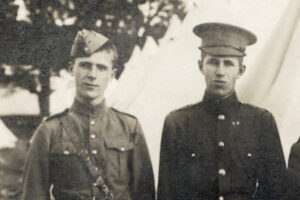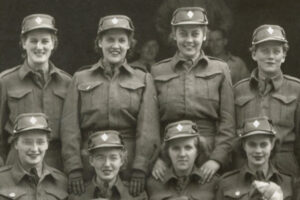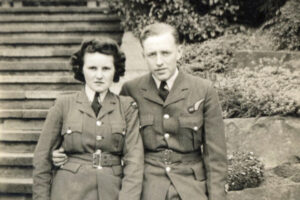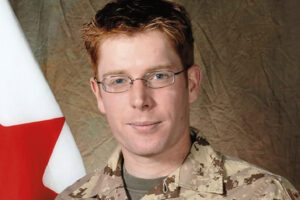The War Heroes of Headwaters We Must Not Forget
A new exhibition at the Museum of Dufferin honours the history of service by veterans from Orangeville, Mono, Mulmur and more.
The pulse of the bass drums on Remembrance Day and the first skirl of the bagpipes move many to tears. And when the bugler plays The Last Post, the lingering notes carry echoes of battlefields around the globe. During these ceremonies we honour courage and sacrifice, and a new exhibition opening this fall at the Museum of Dufferin helps reinforce just what courage and sacrifice have meant to the people of our community. Photos, official records, personal letters and other artifacts bring to life the stories of the local men and women who served with the Canadian armed forces from 1854 to today.
The exhibition launches on Saturday, November 4, the beginning of Veterans’ Week. To mark the occasion, members of the Shelburne and Orangeville legions will accompany a colour party, march past the flag and into the museum, attended by pipers and a bugler. Theatre Orangeville Youth Singers will sing the national anthem and Neil Orford will be the guest speaker. Now retired, Orford was a history teacher at Centre Dufferin District High School when he created the Digital Historian Project and travelled with his student researchers to the beaches of Normandy.
One of the stories the exhibition includes is that of Murray Irwin, the Shelburne bank teller in the Halifax bomber. His fate was similar to many thousands of airmen in the Second World War, but archival records bring compelling details to light. They include not only air force records, but also a letter from another airman in his crew and his mother’s diary, providing firsthand descriptions of just what happened and its aftermath.
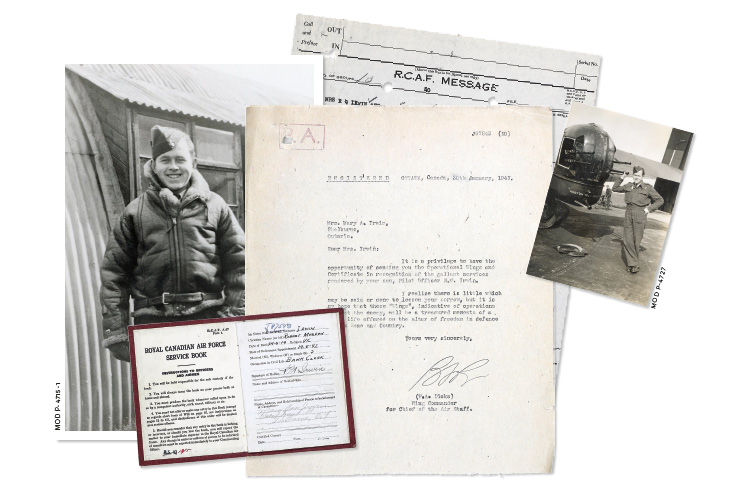
Pilot Officer Irwin is shown here c.1942 in his RCAF flying jacket in front of barracks (left) and in his uniform leaning on the nose gun of a warplane. Among the documents now at the Museum of Dufferin are Irwin’s service book and a letter accompanying his operational wings sent to his mother following his death in the skies over France.
The Halifax heavy bomber, LW674, was part of the No. 420 “Snowy Owl” Squadron, so called because the snowy owl hunts by night. The plane was nicknamed The Swoose Express and had flown at least 20 previous missions. As bomb-aimer, Irwin’s position was in the Perspex dome below the cockpit. On the evening of June 10, the Halifax took off from the airbase at Tholthorpe, near York in northern England. It was just four days after D-Day, with the moon waning gibbous. The plane joined a flight of 432 bombers targeting the railyards near Versailles, aiming to disrupt the movement of German troops to Normandy.
Details of what happened over France were contained in a letter sent to Irwin’s mother, Mary Ann, from Sgt. Norman Binnie, a surviving crew member. Binnie describes Irwin doing his job: “Murray was a very cool type of chap and coming up over the target he spoke very clearly and evenly, giving the pilot directions as to what course he should fly as if we were flying on a peaceful cross-country trip.”
The crew had made their bombing run and were returning to base, Binnie writes, when the aircraft was “attacked by an enemy night fighter…we received a burst of cannon shells in the bomb bays.” He recounts a second attack from below, another burst of cannon shells, a fire he couldn’t extinguish and confusion at the escape hatch where one airman had become lodged halfway out. Binnie was able to push the airman free and then jumped himself. Somehow the two men evaded capture and made it back to England, but Binnie did not know the fate of the rest of the crew.
After the war, the mayor of Theuville, a village in the district of Chartres, described seeing a bomber explode that night. He and other villagers searched for remains the next day and buried them in the local cemetery. Pilot Officer Murray Irwin was among them.
Mary Ann’s grief is poignantly conveyed in three brief entries in her diary, now in the archives. The diary begins in 1945, but there are only sporadic entries at first, until this one: “June 8: Murray wrote his last letter to me a year ago today.” Followed by this: “June 11: A year ago today Murray went missing.” Then in August: “Received registered letter from Ottawa saying that Murray is now for official purposes presumed to have died on active service on June 11, 1944.”
To honour stories like Irwin’s, four members of the Shelburne Legion are helping to organize the museum ceremony. Dean Schroeder, John Flannery, Reverend Gordon Horsley and Walter Kolodziechuk are part of the Dufferin Veterans Association, which includes members from both the Shelburne and Orangeville legions.
Dean Schroeder, president of the Shelburne Legion, served two tours in Bosnia and Croatia with Princess Patricia’s Canadian Light Infantry. He also served with the 2nd Battalion, Irish Regiment of Canada in Sudbury. One of his former duties with the legion was to place flags at veterans’ gravesites in Shelburne on November 11 where, he says, he was amazed by the number of veterans from such a small population.
John Flannery served in the Canadian forces with NATO in Germany and with the United Nations in the Sinai Peninsula and Cypress. Walter Kolodziechuk enlisted with the Royal Canadian Engineers before transferring to the military police, serving with the UN in Cypress and then with NATO at a Canadian base in West Germany. Horsley was in the Canadian reserves and is pastor of Abiding Place Ministries in Shelburne.
Kolodziechuk recalls being overwhelmed by the warm welcome he received on visits to the Netherlands, which was liberated by Canadians from Nazi occupation in 1945. More than 7,600 Canadians died in the six-month campaign. In gratitude for their sacrifice, on November 11 each year, Dutch children still light candles and put flowers on Canadian graves. “We want to make sure our people here also remember what our veterans achieved,” says Kolodziechuk.
The Museum of Dufferin archives include the names and records of 6,228 local veterans, with more being added as the Canadian Forces continue to be called up around the world. Here are a few of their stories.
The earliest veteran on the museum’s roster is Hugh Lowrie. He served with the 2nd Dragoons (Royal Scots Greys) in the Crimean War (1853−1856), fighting at the Battle of Inkerman and the Siege of Sebastopol.
The Scots Greys cavalry were part of the Heavy Brigade that participated in the Battle of Balaclava, but their initial victory was undone by the renowned and disastrous charge of the Light Brigade. Lowrie was born in Scotland, but he came to Canada in the 1870s and worked as a shoemaker in Hillsburgh, Erin, Caledon and Grand Valley. Late in his life, without family or support, he was a resident of the Dufferin County Gaol in Orangeville, though not as an inmate; the building also served as a house of refuge. He died there on August 18, 1918.
When the Fenians raided British North America, they were hoping to put pressure on England to leave Ireland. Thomas Campbell (c.1836–1918) answered the call to defend our country against the insurgents. He was one of at least ten men from Dufferin County who enlisted at the time and were entitled to the grant of $100 awarded by the Dominion government to Fenian raid veterans.
Campbell served with the 36th Peel Regiment in 1866, earning the Canada General Service medal. In civilian life, he was a leather tanner and currier at an Orangeville tannery. In his old age, with no family to care for him, he entered the Peel House of Refuge in Brampton where he died at age 82.
Among the many men who left Dufferin County to fight for England in the First World War was Thomas “Albert” Bowers (on the right), a farmhand who enlisted with the Shelburne Company of the 164th Battalion of the Canadian Expeditionary Force.
Bowers lied on his attestation papers to enlist in Mansfield when he was just 15 years old, signing up with his two brothers, Leonard and Melbourne. Shipped overseas in 1917, Bowers survived the war, returning in 1918. He died at Toronto’s Sunnybrook Hospital in 1971 and is buried in Mount Pleasant Cemetery.
Brothers William (pictured at left) and Sidney Cole also signed up with the 164th Battalion in the First World War. In 1911, when both were in their early teens, they arrived in Canada as British Home Children – two of the thousands of disadvantaged children Britain sent abroad to its dominions to work on farms on the premise the children’s opportunities would be improved.
William was placed at the Gillespie farm in Amaranth where he was considered a capable and trustworthy worker. The brothers may have signed up thinking of going home to England. William was killed in action in France on August 8, 1918. Sidney survived the war and decided to return to Canada, where he lived on George Street in Toronto.
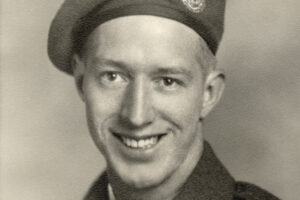 DAVID SILK
DAVID SILK
David Silk joined the army signal corps in 1942 and served two years overseas. Before enlisting he had become widely known as the “invincible goaltender,” playing for the 1937/8 Orangeville Junior C OHA championship team.
Every single player on that team voluntarily enlisted for service in the Second World War. Eleven of the 15 who signed up made it home. The fate of the other four is not known to the museum archives. When Silk returned from Europe in 1946, he moved to Walkerton where he continued to play hockey.
Born in 1892, Harry Ross Conlin grew up on a farm near Orton in East Garafraxa. After signing up with the 153rd (Wellington) Regiment at Fergus, he trained at St. Thomas, and in November 1916, he married Jessie May McQuarrie. Five months later he sailed for England, and in November 1917 he left England for France, transferred from the 153rd to the 18th Battalion. In the field, he was promoted to lance corporal, then corporal.
On November 16, 1918, five days after the Armistice, Conlin was hospitalized with Spanish flu. He died 13 days later. During the final four months of the war, 46,000 Canadian soldiers overseas contracted Spanish flu and 776 of them died. Conlin was posthumously awarded the Military Medal for bravery. He is buried at Tournai Cemetery in Belgium.
Jack MacAdam Aiken (left), nicknamed “Bun,” was a lieutenant in the Orangeville High School Cadet Corps in 1912. When he left Orangeville, to go overseas in 1915, students marched him to the railway station, led by the Cadets’ bugle band. In a letter home from England he wrote, “… every day soldiers are rushed through to the front and about six Red Cross trains per day bring back the wounded… One bunch left here and some of them were back in less than 24 hours.”
Aikin served as a machine gunner with the 14th Battery before becoming a signaller. He served in some of the worst battles of the war, including Ypres, the Somme, Passchendaele and Vimy Ridge. He was taken ill with sciatica brought on by exposure, and spent five months in hospital before being posted to communications in Whitley Camp in England. Aiken personally conveyed news of the Armistice from London to the camp. Born in 1893, he died in 1987 at the age of 93.
Hilda Huxtable (back row, second from left) of Horning’s Mills enlisted with the Canadian Women’s Army Corps in 1943 and trained at Kitchener where she earned her corporal’s stripes as a driving instructor. Wishing to take the course to become a telegraphist, she voluntarily relinquished her stripes and became a private in May 1944. She worked as a telegraphist for the rest of the war and was discharged in 1945 with the rank of lance corporal.
On July 15, 1943, the Shelburne Free Press and Economist reported: “A convoy of the CWAC from Kitchener halted in Horning’s Mills for 20 minutes on their way to spend a weekend at Wasaga Beach. Among them was L.-Corp. Hilda Huxtable, daughter of Mr. and Mrs. T.R. Huxtable. The people of the village treated them to pop, ice cream cones, homemade cookies and oranges. The girls were very much pleased and said it was the most welcome treat they had received on any of their convoys.”
Austin Cauthers was only 18 when he enlisted with the Royal Canadian Air Force as a wireless air gunner. He trained in Alberta, Manitoba and Nova Scotia, and went overseas in June of 1943. His training continued in England and Ireland, and he was attached to the RCAF 407 Squadron, a general reconnaissance squadron protecting allied shipping from U-boats.
Nicknamed the Demon Squadron, they flew Vickers Wellington bombers out of RAF Chivenor in north Devon, England. On June 21, 1944, Cauthers took off on an operational flight over the Bay of Biscay. He never returned. The following day his family received belated word that Austin had been promoted from flight sergeant to pilot officer. His operational wings were sent to his parents some months later. At age 21, Cauthers was the first casualty of the Second World War from the Mansfield area.
Thanks to the efforts of his family and many others, Corporal Matthew McCully’s story is well known in Dufferin County. Raised in Orangeville, he joined the Canadian Army Reserve in 2001 and transferred to the regular force as signals operator a year later. After signals training he joined A Troop, 2 Canadian Mechanized Brigade Group HQ and Signals Squadron.
He was deployed to Afghanistan in 2003. On his second tour there, McCully was a member of the Operational Mentoring and Liaison Team, helping to train members of the Afghan Army. On May 25, 2007, at age 25, he was on foot patrol west of Kandahar when he stepped on an IED and was killed.
“He believed in the mission, and he was proud to be a soldier. He really felt that they could achieve peace and security there,” his mother, Valerie McGrady, told this magazine in 2008. McCully’s funeral was held in Orangeville with full military honours. He is buried in Forest Lawn Cemetery. Corporal McCully is the inspiration for Bravery Park which opened in Orangeville in 2021. The occasion was marked with a flyover by the Canadian Forces Snowbirds in Missing Man formation.
Canadian men and women continue to serve in many far-flung places, including with NATO in Iceland and Kosovo, with the United Nations in Cypress, in Congo, Niger and Sudan, and they’re supplying arms and training troops in Ukraine, a conflict with echoes of the Crimean War more than 150 years on. So often at the end of wars, bitter enemies become allies and trading partners. Wartime allies become enemies. Meanwhile, it’s the veterans who carry the memories and scars, and their families who carry the grief. Our part is to honour them.
Related Stories
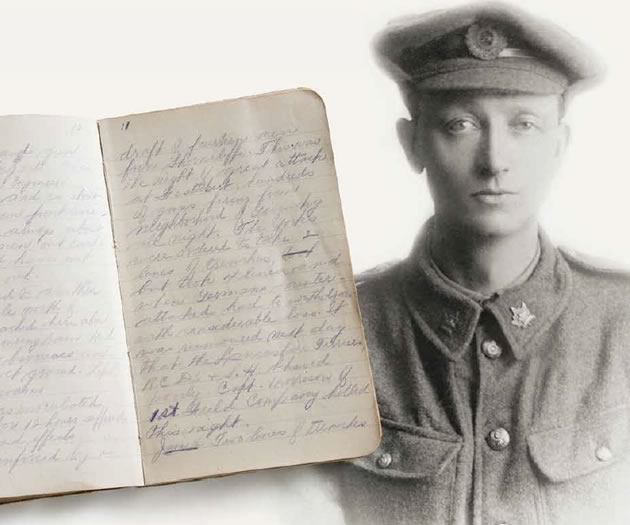
Face to Face with World War I
Sep 16, 2016 | | HeritageCharles Ernest Thomas, private, 3rd Field Company, Canadian Engineers
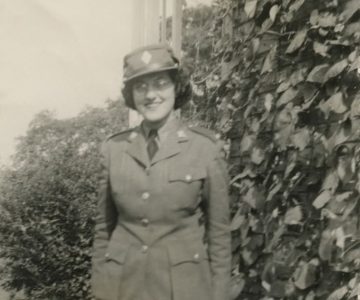
Doris Porter Goes to War
Mar 20, 2017 | | HeritageAs a young woman, the lifelong resident of Caledon served in the Canadian Women’s Army Corps during World War II.
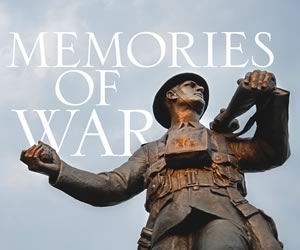
Memories of War
Sep 11, 2013 | | Autumn 2013This nationwide project encourages World War II and Korean War veterans to tell their stories to ensure their memories will be preserved for generations to come.
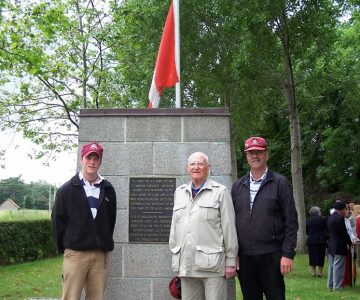
My Grandfather’s War
Sep 11, 2013 | | HeritageThree generations of a Caledon farming family travelled to Europe to retrace the steps of the 1st Canadian Parachute Battalion during WW II.



